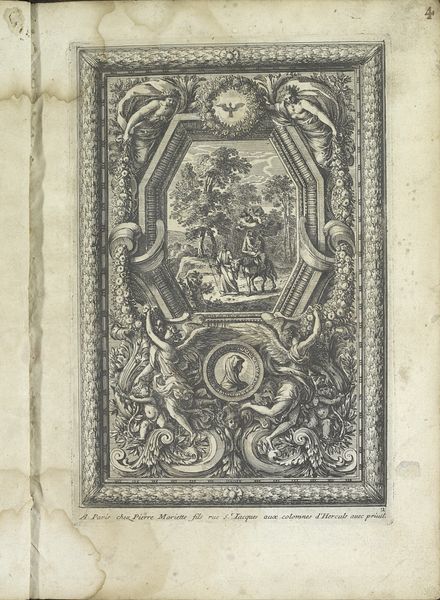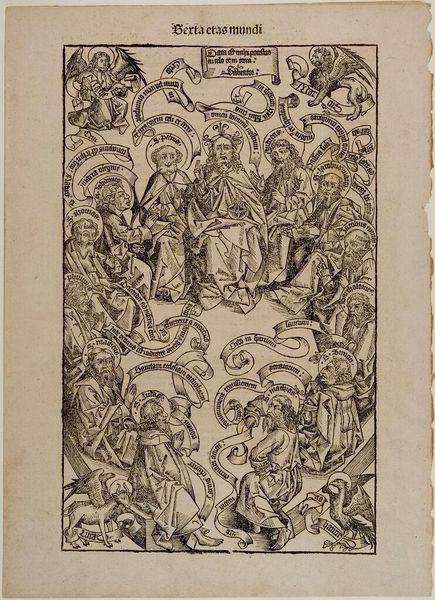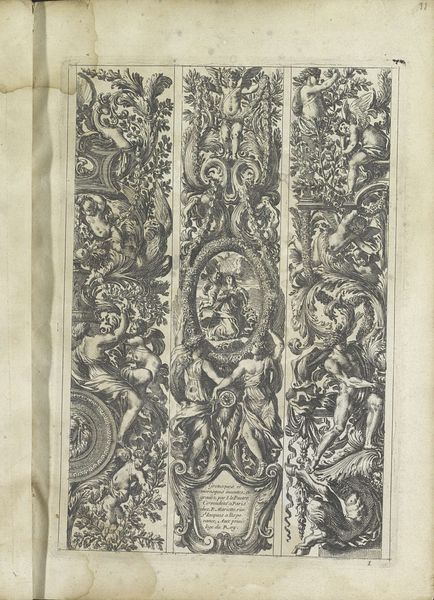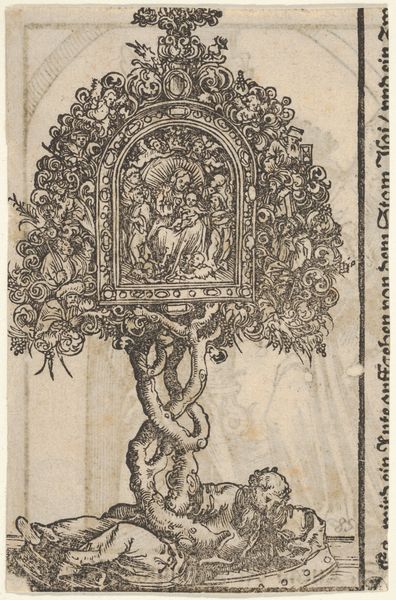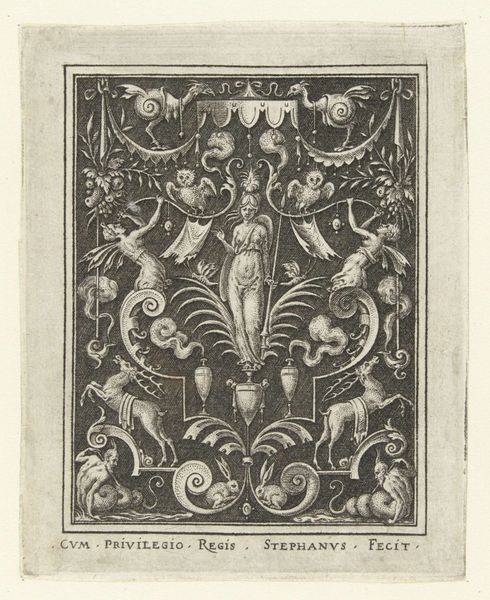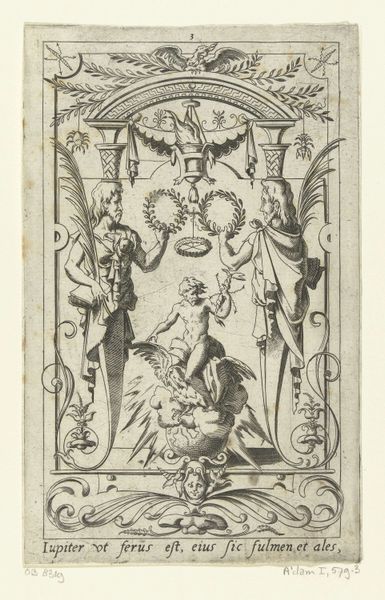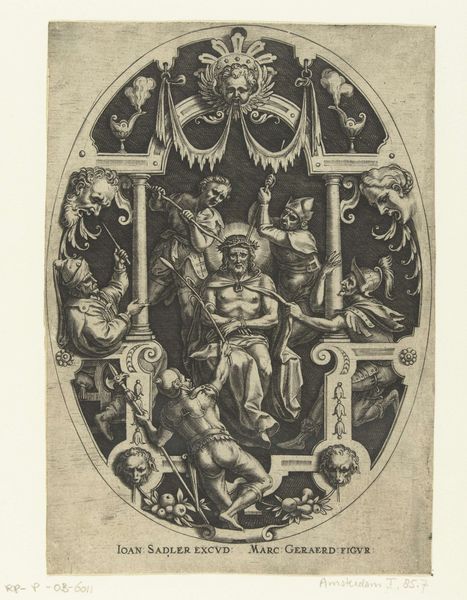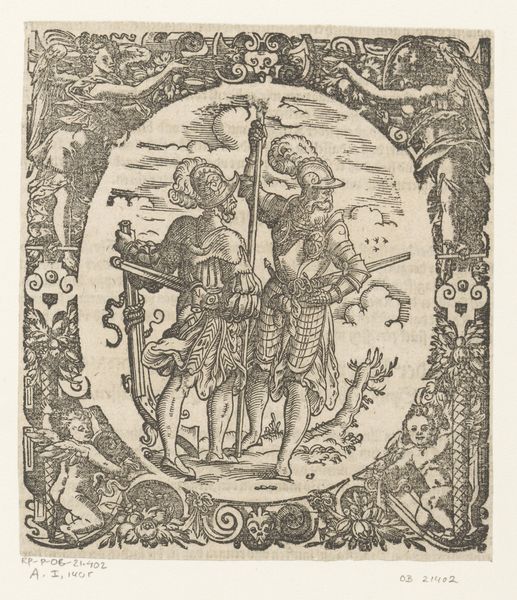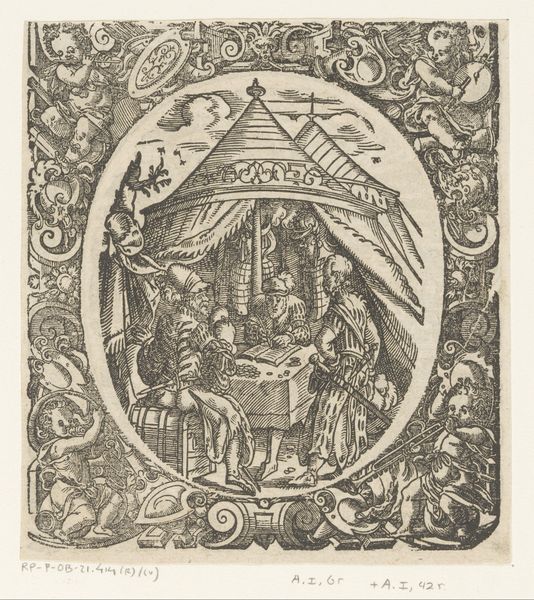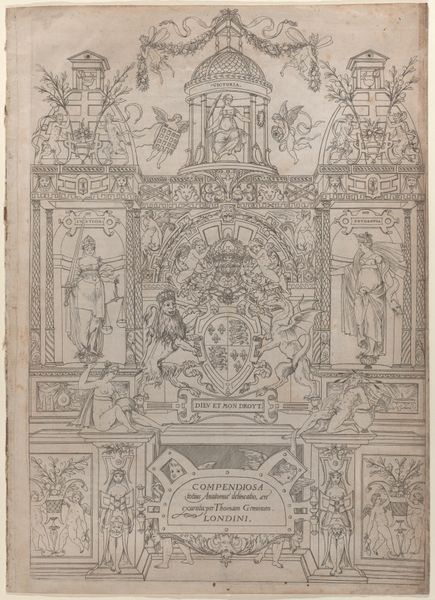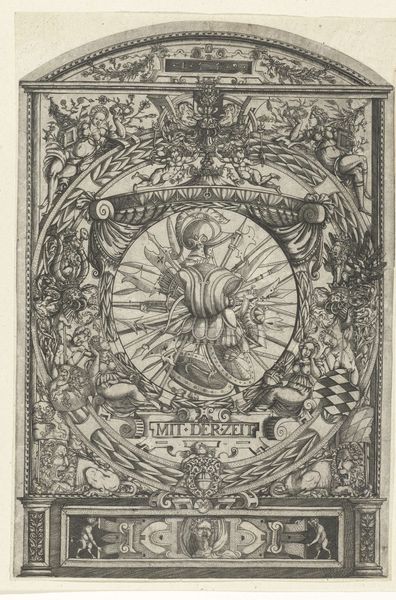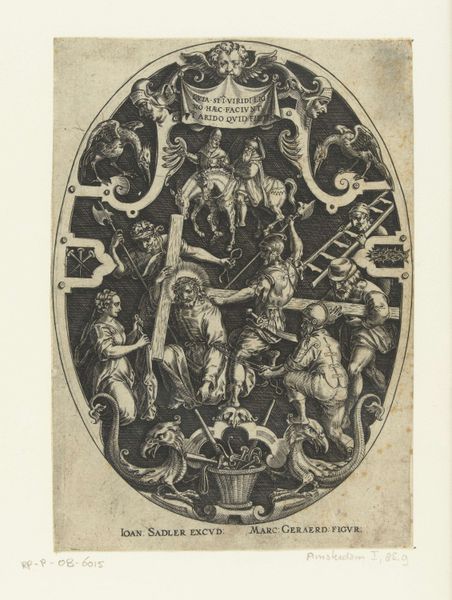
print, engraving
#
allegory
#
baroque
# print
#
figuration
#
history-painting
#
engraving
Dimensions: height 223 mm, width 147 mm
Copyright: Rijks Museum: Open Domain
Curator: Well, here we have "Panel with the Abduction of Europa in Medallion", an engraving created around 1655 to 1657 by Jean Lepautre. It’s part of the Rijksmuseum collection. What leaps out at you? Editor: An awful lot of detail! Intricate, really. I feel a sense of overwhelming craftsmanship here—the labor embedded in the meticulous lines. It almost seems like a celebration of the engraver's skill. You can practically feel the weight of the plate being pressed, each stroke deliberate and exacting, given the materials and printing knowledge available at the time. Curator: It is incredibly detailed. For me, I keep coming back to that central medallion, that whirlwind of myth—Europa clinging to the bull... It feels very charged. Editor: The depiction of Europa herself feels staged. Where’s the fear, the desperation of the abducted? I feel an idealized performance rather than the real turmoil of that event. Perhaps, more generally, engravings of this time—meant for broad consumption—did not always privilege genuine feeling. Also, one must consider, Lepautre probably didn't cut these plates himself but, in fact, probably functioned as more of a publisher and oversaw several employees. It makes you wonder about his own personal feelings for the images. Curator: That's a fascinating point—the emotional distance inherent in the process, and maybe the division of labour. For me, beyond the details, I can’t escape this feeling of buoyant theatricality, a certain flair, a joie de vivre that characterizes so much baroque art. Even within the drama of abduction, there's still this inherent joy in showing the story unfold. Editor: Yes! And beyond the figures represented, this speaks to something I have noticed across the decorative art forms of this era: an unabashed, bold materialism and exuberance that reflect a particular societal fascination with craft. I really wonder what that exuberance hid, though—all those ornate, complicated visual textures smothering a whole lot of human labor. Curator: Well, whatever is hidden beneath the surface, for me this panel really speaks to the endless dance between storytelling and craft that defines art across time. It’s a beautiful illustration of just how powerful that relationship can be, as it takes me to unexpected imaginative spaces. Editor: It shows us that even images loaded with drama have been and always will be just so much human work, produced in social situations, even if those stories lead us to grand emotions. It can make one think deeply.
Comments
No comments
Be the first to comment and join the conversation on the ultimate creative platform.
